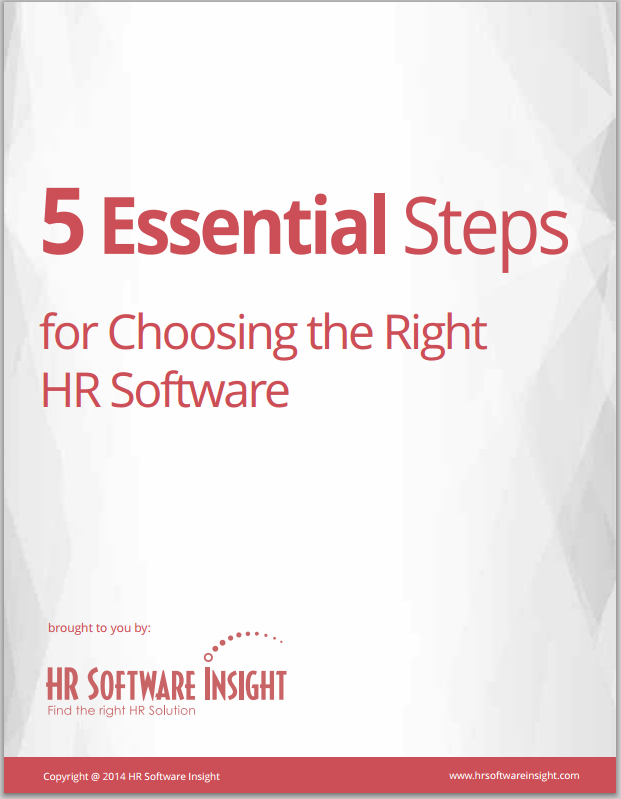Your HR department is overwhelmed, and you’re looking for a solution to cut down on their headaches.
It’s to the point where Excel sheets, paper forms, and filing cabinets just aren’t cutting it. You’ve talked to team members and determined exactly what’s needed.
But as you start looking at vendors and reviews, you’re faced with a new question:
Should I buy the best of each solution (best-of-breed) and integrate them? Or should I invest in a unified solution?
Both approaches have clear benefits and disadvantages that should be explored before making your decision:
Best-of-Breed
A “best-of-breed” solution means that you’re searching for the best possible software system of each type (such as payroll, applicant tracking, or benefits management) and integrating the systems yourself.
When taking this approach, robust functionality should be your focus.
Vendors who offer best-of-breed solutions have better functionality than its end-to-end suite competition. According to an HRLabs article comparing the two approaches, the individual solution can offer specialized features that are easily customized to a company’s needs. In addition, since the vendors are focused on one type of system, the updates are usually released quickly with fewer bugs.
However, robust functionality shouldn’t be your only consideration. Some cons to searching out a best-of-breed solution are:
- Facilitating the integration yourself – To share information across different applications, a customized interface needs to be built connecting the databases and platforms for each tool. This project may need to be outsourced if your company doesn’t have the internal talent to build such a program.
- Potential incompatibility – When dealing with multiple solutions from various vendors, there’s a chance the systems won’t be compatible not only with each other, but with your current workflow applications. While searching for best-of-breed solutions, it’s important to ask vendors if their system can be integrated with the tools you’re already using.
- Extended employee training – Using multiple solutions means you’ll have to train employees on each system. This also requires users to input their information multiple times to complete tasks, making a workflow more complex.
- Increased burden on IT – IT will have to support and maintain the numerous platforms, program languages, operating systems and databases involved for each system. Keep the lines of communication open to understand how much your IT department can handle.
Unified Suite
A “unified” solution is an end-to-end suite that combines features to streamline your HR workflow with one integrated system. Some vendor examples are:
HR suites already have one interface for multiple tools, as well as a common database to access data easily. This reduces costs by eliminating the need to build customized interfaces to integrate each tool. It also makes HR more efficient by reducing repetitive tasks, like entering the same information into multiple forms. A unified HR solution can integrate data across the entire suite, making company-wide reporting easier.
A unified suite sounds like an end-all, be-all solution. However it has its pitfalls as well:
- Reduced functionality – HRLabs calls this “anemic functionalities.” In short, suites may focus on quantity over quality. When vendors are trying to develop multiple applications at once, the features tend to be a little more generic than those of vendors focusing on one type of solution.
- Customization difficulty – A suite is typically less capable of tailoring its features to meet very specific business needs. This could cause issues with reporting and workflow integrations.
- Need for additional interfaces – Your company likely has a workflow using third party applications. Additional interfaces may need to be built to continue using your current applications, which could add a significant cost to the project’s budget.
Simplifying Workloads
According to Deloitte’s 2015 Global Human Capital Trends study, “HR software buyers today want systems with fewer features and less complexity, not more.”
As written in a Bersin by Deloitte article, Ten Disruptions in HR Technology in 2015, 33% of companies have 10 or more HR systems for their employees to use. But many want to ditch the best-of-breed solution model to make tasks easier on users.
The same article stated that 47% of companies will replace their multiple HR systems for one unified solution to consolidate vendors. It also mentioned that 67% of software buyers will select a system based on its ease of use rather than the quality of its features.
Although the current trend is leaning toward unified solutions, it’s important to remember that no solution fixes all business problems.
To keep anything from falling through the cracks, customer experience management vendor Virtual Hold Technology (Vht) suggests an 80/20 strategy. This approach combines a unified HR solution (solving 80% of company issues) and a best-of-breed solution to fill in the gaps (20% of issues) the unified system can’t handle.

 Choosing a HR vendor is all about finding the right fit. Our exclusive report will walk you through the process and help you select the perfect solution.
Choosing a HR vendor is all about finding the right fit. Our exclusive report will walk you through the process and help you select the perfect solution.
good post
Elizabeth a very point to point article, helpful for the newbiews who want to know about HR softwares.